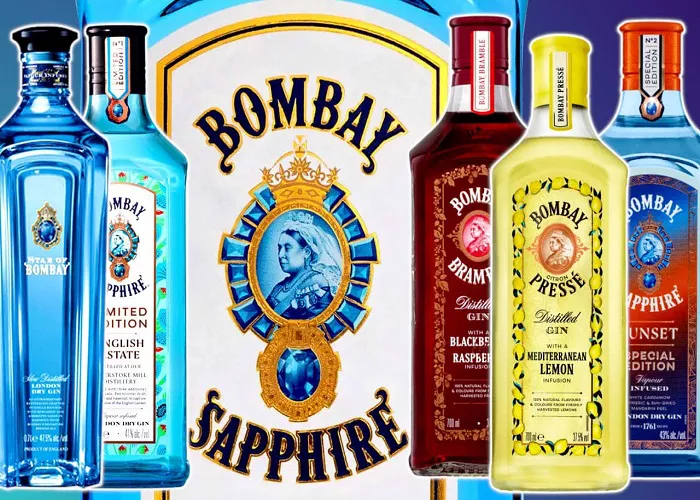Bombay Sapphire Blue is one of the most stunning and sought-after gemstones in the jewelry industry. Known for its deep, velvety blue hue, this gemstone captures attention with its rich color and exceptional brilliance. Whether set in rings, necklaces, or earrings, Bombay Sapphire Blue adds a touch of sophistication and luxury to any piece of jewelry.
In this article, we will explore what Bombay Sapphire Blue is, its history and origin, how it is mined and processed, its value and grading, popular jewelry designs featuring this gemstone, how to care for it, and its symbolism and meaning. By the end, you will have a complete understanding of why this gemstone is so highly prized.
What Is Bombay Sapphire Blue?
Bombay Sapphire Blue is a variety of corundum, the same mineral family as rubies and sapphires. While most sapphires come in different shades of blue, Bombay Sapphire Blue is known for its intense, deep blue color with a slight violet undertone.
Key characteristics include its rich, velvety blue color, a hardness of 9 on the Mohs scale (making it extremely durable), typically eye-clean clarity, and often faceted cuts to maximize brilliance. This gemstone is not only beautiful but also durable, making it perfect for everyday wear in rings, bracelets, and other jewelry pieces.
History and Origin of Bombay Sapphire Blue
The name “Bombay Sapphire” is inspired by the historic trading hub of Bombay (now Mumbai), India, where many fine gemstones were bought and sold. However, the gemstone itself is primarily sourced from Sri Lanka (Ceylon), Madagascar, and Kashmir.
Sri Lanka is known for producing bright, medium-blue sapphires, while Madagascar is a newer source with high-quality blue sapphires. Kashmir sapphires are rare and highly valuable, known for their velvety blue hue. The term “Bombay Sapphire” is often used in the trade to describe sapphires with a deep, saturated blue color, even if they are not from India.
How Is Bombay Sapphire Blue Mined and Processed?
Sapphires are typically found in alluvial deposits (riverbeds) or primary deposits (rock formations). Miners use traditional and modern methods to extract the rough stones. Alluvial mining involves sifting gemstones from river gravel, while underground mining requires digging tunnels to reach sapphire-bearing rocks.
After extraction, rough sapphires are sent to gem cutters who shape them into faceted gems. The cutting process is crucial because it affects the stone’s brilliance and color. The rough stone is first examined for flaws, then pre-shaped into a basic form before facets are carefully cut and polished to enhance sparkle. The most popular cuts for Bombay Sapphire Blue are oval, round, cushion, and emerald.
Grading and Value of Bombay Sapphire Blue
Like diamonds, sapphires are graded based on color, clarity, cut, and carat weight. The finest Bombay Sapphire Blue has a deep, vivid blue hue with strong saturation and no unwanted color tints. High-quality sapphires are eye-clean, meaning they have no visible inclusions. A well-cut sapphire reflects light evenly, while poor cuts can make the stone look dull.
Larger sapphires are rarer and more valuable, but color and clarity matter more than size. Most sapphires are heat-treated to improve color and clarity, but untreated, natural sapphires are rare and command higher prices.
Popular Jewelry Designs Featuring Bombay Sapphire Blue
Bombay Sapphire Blue is a favorite among jewelers and designers. It is often used in engagement rings, typically set in white gold or platinum for contrast, with popular styles including solitaire, halo, or three-stone designs. Necklaces and pendants often feature a single sapphire for a timeless statement, sometimes paired with diamonds for extra sparkle.
Earrings range from classic studs to elegant dangling designs, while bracelets may include tennis bracelets with alternating sapphires and diamonds or charm bracelets with sapphire accents. Men’s jewelry, such as sapphire cufflinks or signet rings, adds a sophisticated touch.
How to Care for Bombay Sapphire Blue Jewelry
Though sapphires are durable, they still need proper care to maintain their beauty. Cleaning can be done with warm soapy water, gently scrubbing with a soft brush. Ultrasonic cleaners are safe for sapphires unless the stone has fractures. Harsh chemicals like perfumes, bleach, and acids should be avoided as they can damage the setting.
Storage should involve keeping sapphire jewelry in a soft pouch or separate compartment to avoid scratches. Rings should be removed during heavy work like gardening or gym activities.
Symbolism and Meaning of Bombay Sapphire Blue
Sapphires have been cherished for centuries, symbolizing wisdom and truth, often associated with royalty and clergy. They were also believed to ward off evil in ancient times and represent loyalty and commitment, making them popular in engagement rings. Bombay Sapphire Blue, with its deep color, represents depth, sincerity, and inner peace.
Conclusion
Bombay Sapphire Blue is a gemstone of extraordinary beauty and value. Its rich color, durability, and timeless appeal make it a favorite for fine jewelry. Whether you’re looking for an engagement ring, a pendant, or a pair of elegant earrings, this gemstone offers unmatched elegance.
By understanding its origin, grading, and care, you can make an informed choice when purchasing or maintaining Bombay Sapphire Blue jewelry. Its deep blue hue will continue to captivate for generations, making it a true treasure in the world of gemstones.
Would you like recommendations on where to buy authentic Bombay Sapphire Blue jewelry? Let me know how I can assist further!
Related Topics:
- What Does a Brown Sapphire Stone Look Like?
- Is a Star Sapphire a Real Sapphire?
- What is so Special About Purple Sapphire Stars?


